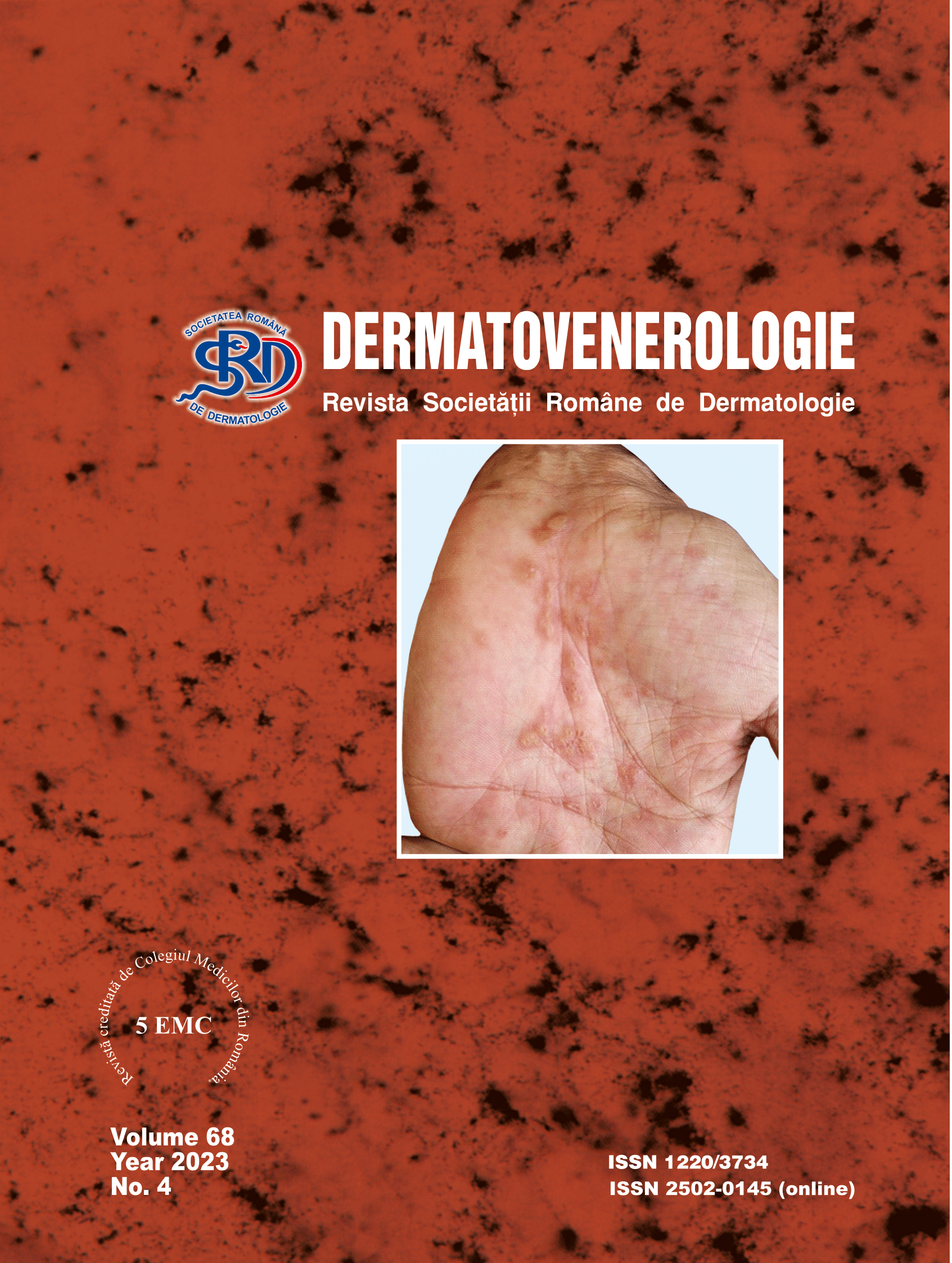Rezumat
Boala Fox-Fordyce este cunoscută ca fiind o afecţiune cronică şi neobişnuită care afectează regiunile cu o densitate mare de glande apocrine. Această boală afectează femeile între 13 şi 35 de ani. Se consideră faptul că dezechilibrul hormonal joacă un rol cheie în patogeneză, dar cauza exactă este încă neclară.[1] O altă cauză incriminată ca factor declanşator al acestei boli poate fi un istoric de traume cauzate de epilarea cu laser. Pruritul poate fi prezent şi este cauzat de extravazarea conţinutului glandular. Din cauza pruritului sever, pacientul poate dezvolta infecţie sau hiperpigmentare în regiunile afectate. Caracteristicile clinice sunt papule foliculare monomorfe, în formă de cupolă, de culoarea pielii, care afectează zonele axilară, pubiană, perineală şi areolară, asociind prurit şi căderea părului în regiunile afectate. Histopatologia este în multe cazuri nespecifică.[2] Opţiunile terapeutice sunt variate şi pot include corticosteroizi topici, retinoizi topici, clindamicină topică, inhibitori de calcineurină topici, retinoizi orali, contraceptive orale, infiltraţii intradermice de toxină botulinică sau triamcinolon, excizie, electro-cauterizare şi laser.


